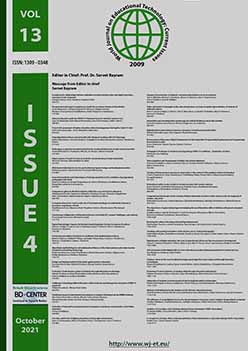Video and media technologies in the educational space as a form of mental representation of students of different cultures
Video and media technologies in the educational space as a form of mental representation of students of different cultures
Author(s): Alisa V. Mamedova, Nigina S. Babieva, Elena V. Zvonova, Lyudmila V. Tarabakina, Nikol A. Pesterevae, Izumrud A. KerimovaSubject(s): Education, School education, Film / Cinema / Cinematography, Sociology of Education
Published by: Birlesik Dunya Yenilik Arastirma ve Yayincilik Merkezi
Keywords: video and media technologies; imaginal representations; advertisement; culture; types of cultures; behavior;
Summary/Abstract: The search for conditions to create a developing learning environment, methods and means of teaching is the main objective of psychological science. The relevance of the problem under study is due to the active development of intercultural communication processes, in which advertising plays an important role. This circumstance requires the inclusion of video and media technologies in the training of specialists in the field of advertising. The purpose of the paper is to describe the course and the results of the study of imaginal representations in advertising aimed at promoting goods in different cultures. The leading method in the study of this problem was the semantic differential which allows one to identify the difference in the semantic content of the commercial of a popular drink produced by an international company. Fifty students who are representatives of religious and non-religious cultures, aged between 18 and 30 participated in the study. The authors of the paper put forward the assumption that since social representations are formed and depicted in different cultures which are different from the social representations of other cultures, the content of the advertising text will be interpreted in different ways. This can affect people’s behavior of different cultures. The content of imaginal representations was studied in the process of perceiving the advertisement of a popular drink. The results of the study showed a significant difference in the content of imaginal representations of the experimental groups. However, the study showed that this difference did not influence consumers’ behavior. The materials of the paper may be useful for psychologists studying intercultural differences, as well as specialists in advertising psychology, when developing advertising texts for multicultural goods and services.
Journal: World Journal on Educational Technology: Current Issues
- Issue Year: 13/2021
- Issue No: 4
- Page Range: 890-901
- Page Count: 12
- Language: English

